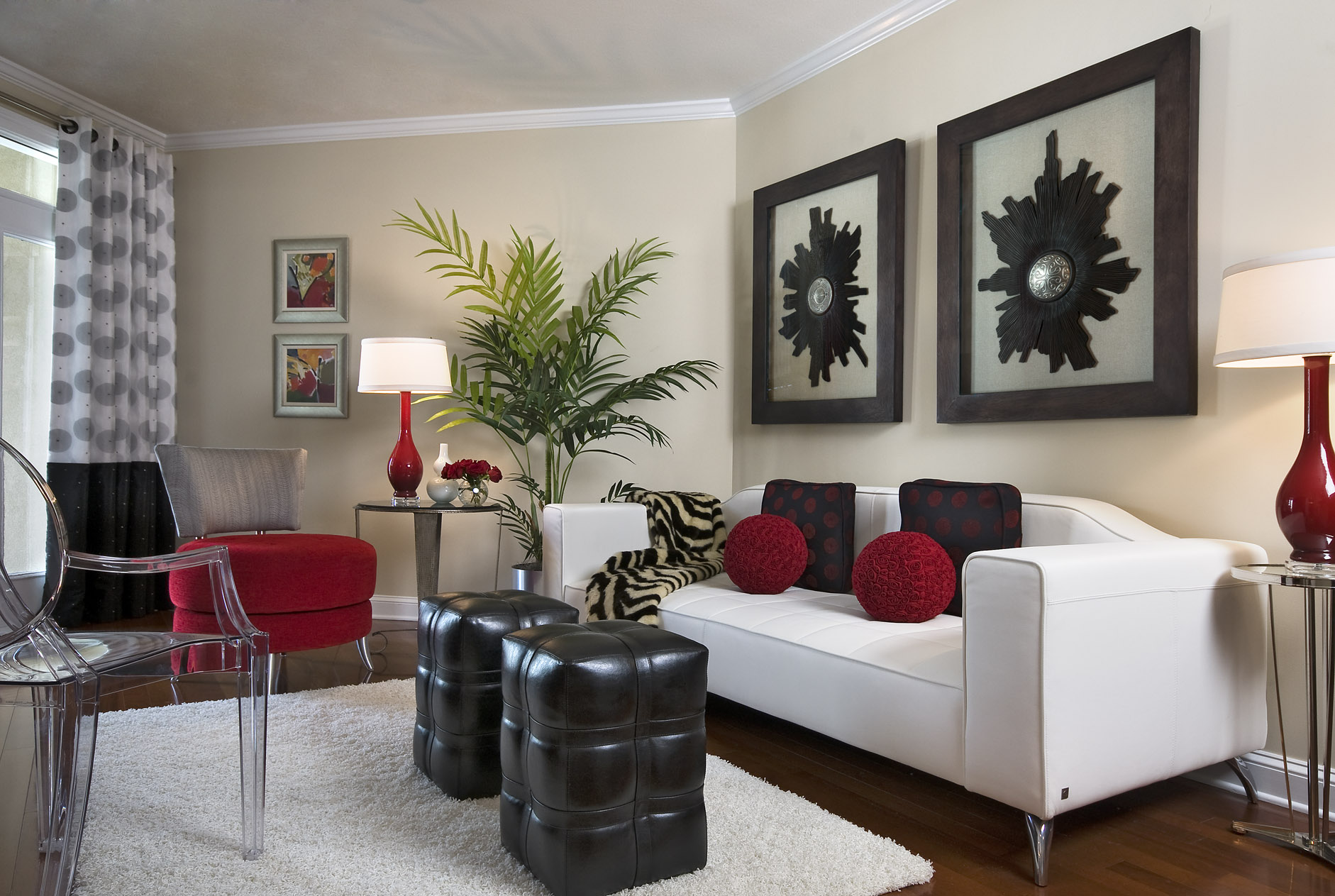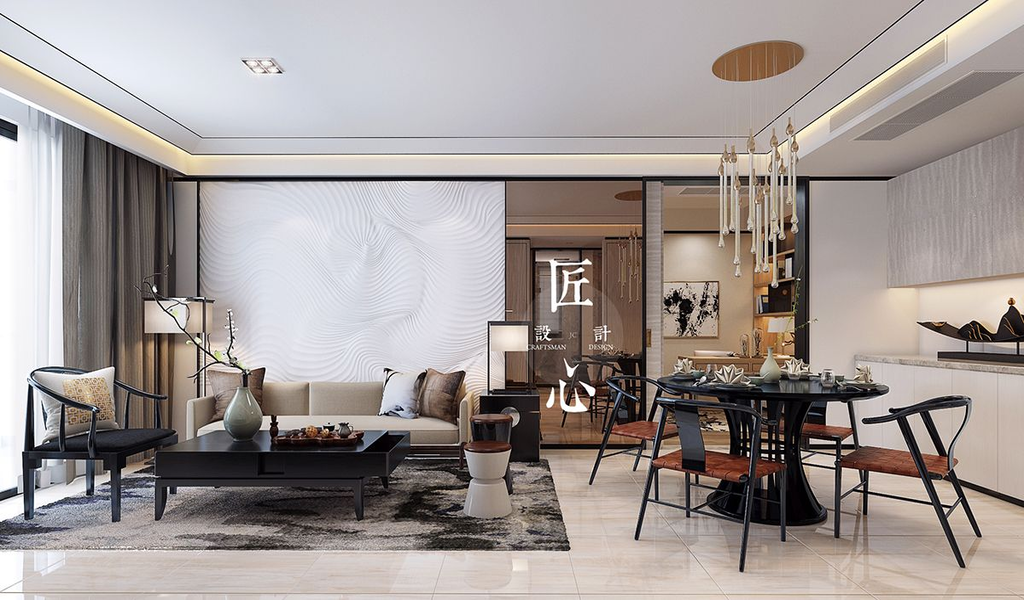
Spacious living has its benefit list so long, that we thought of giving it a miss and instead, help you out to de-clutter those cubicles like apartments to let them exude the spacious factor. Your house may be short on space, but by infusing these ideas, your home could be high on charm.
Playing with the subtle shades
This one is no new fact. Light colors, white in particular, make a room feel spacious, airy, light, calm and serene. But we want to tell you about a ‘cheat sheet’ to master playing with these subtle hues. A smart way to do light colors is to use the different shades of the same hue. This collaboration is very useful not just for the décor and furnishing, but even on the walls and ceiling. While using one color consistently throughout a common area, choose a slightly lighter shade than the wall color for the ceiling and a slightly darker shade for the trim.
Fab Furniture
There’s a lot of possibility of bringing the illusion of space by using the right kind of furniture. One might assume that decorating a small space with small furniture will let it breathe. Here’s another nail in the coffin of this belief. Instead of going for multiple pieces, one prominent furniture piece such as a statement armchair will keep the space uncluttered and open. Ace Interior Designer Sheela Levy, who has made her mark all around the world, suggests going for one large couch or an L-shaped sofa instead of multiple pieces. She further explains, “The sofas should be in a light, neutral color while the armchair could be printed but only in colors that work with and coordinate the color scheme of the room.” Coming to the placement aspect, pulling furniture away from the wall will also help you create the illusion of spaciousness. This will make it appear like you are not crunched for space and have given the furniture their space. Whether it’s your bedroom or the living room, putting upholstered storage ottomans helps keep clutter hidden, camouflaging the fact that it’s more than just a pretty piece of furniture.
Mirror Mirror!
Oversized mirrors are the perfect illusionists. They reflect light and make smaller spaces feel larger. Using architectural-style mirrors of varying size can impede the impression of an added window or door. Even circular mirrors without a frame can bring about a refreshing feel to the room. These mirrors give the delusion of the much-needed depth that smaller spaces require. Talking of mirrors, Architect and Interior Designer Renu Robin Matharu, Head of Renu Robin Designs, says, “Apart from soaring ceilings and gigantic windows, there is no better friend to a small space than a well-placed mirror. It gives an illusion of expanding walls and helps break visual clutters. The reflection maximizes the effect of natural light-giving the space an amplified look.”
The Accessories
Your house needn’t be full of artifacts and décor items to bring out your love for art. “You should ease out on the decorating bit. This does not mean that you don’t add any decorating elements to a place but you shouldn’t cluster it. Try keeping it monochromatic for a spacious illusion,” shares Renu Robin Matharu. Make one specific corner for your favorite items, and arrange them in accordance to color and height. This twist will turn a potential clutter disaster into a streamlined display with personality. In the same line, Sheela Levy opines, “Ensure that the rich dark wood is confined to tables and stools. If you want to use prints on the chairs or cushions, stick to shades of white, neutral prints or one stark dark color to enhance it. The fewer the colors you throw into the mix, the bigger the room will feel. If you are using curtains, then ensure they are light and flowy, nothing heavy.” Try that you dress the room with fewer, larger decorative items like one big vase with flowers as opposed to lots of small pieces which only make the room look cluttered.
Pay heed to the adjacent spaces
Your theme from one room should be continued to the adjacent spaces, or given a proper transition. Neighboring spaces have a noteworthy impact on the design of living rooms. If you want to avoid making excessive changes to the décor of the house, then you must take into consideration the color schemes of the spaces visible from the living room. Try to mix them harmoniously with the right collaboration of lighter and darker shades. Similarly, windows and the view outside can be infused with the décor such that they give space to look around, giving depth and area for an onlooker, opening the world to them.
Clear the passage
When you are planning out the décor and the placements, it is important to leave the passages open and airy, otherwise, it can augment the claustrophobic feel. Sharing different tips for different rooms, Architect and Interior Designer Renu Robin Matharu says, “Placing a piece of furniture at a diagonal angle towards the middle of the room help giving illusion of space. Place your bed in a corner of your bedroom to open up the floor space. Basically, one should not place any furniture in areas that would block a view or ability to easily move about the space.”
Attending to the details
It is the personal touch that gives your home the desired character, making it more inviting. A single painting, placed at the eye-level or one-of a-kind accents such as photos or sculptures can bring life to a boring wall. Devoting one particular space in a room for such details will make them the conversational pieces. “It’s all about attention to detail, ensuring that the area is clutter free, structured and styled in some way, with clear lines, flow, rhythm and color story to it. The rules of feng shui dictate the same mantra! The quieter the decor and space, the more of a sanctuary the space will feel like,” tells Sheela Levy.
Soothing the senses
Once you have succeeded in de-cluttering things and creating the commodious feel for your house, ponder over one thing for the last time, is everything looking soothing to you? There should be smooth transitions between different furniture and décor. Employing one element that emphasizes the vertical space in the room will increase the sense of openness. It also enhances the feeling of movement and flow. Bright walls open up a room, so, complement it by going for a dark ceiling that will create depth and draw your eyes upwards, creating the illusion of height. “Wallpaper used on the ceiling can make a room feel much larger as it will draw your eyes up making the room feel a lot bigger! Also ensure that the wallpaper design and color blends with the color and decor of the space,” suggests Sheela Levy. It should be soothing to all your senses, even your sense for sound. It is important to make your home sound proof as it is another factor that can hinder the comfy spacious feel. Well, how to effectively do so makes for a discussion some other day!
Yes, now you know how to let your abode speak of this openness. It’s time you revamp your home and bring out the pseudo-spaces to life.









